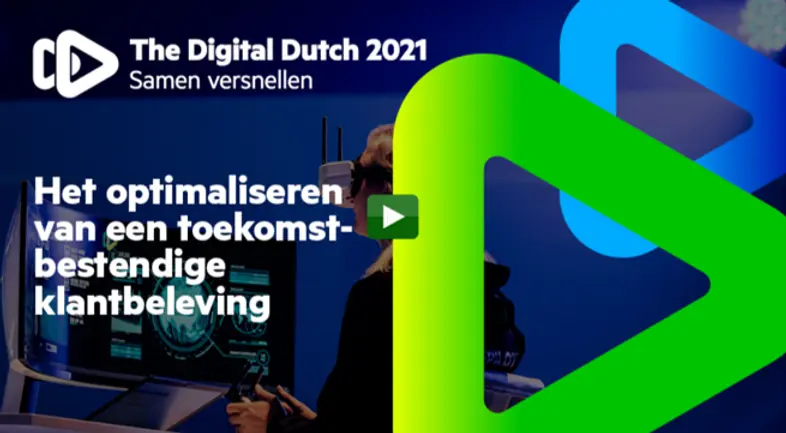How conversational UI will finally enable a true omnichannel experience
- Martijn Franssen
- 8 feb 2023
- 5 minuten om te lezen
Bijgewerkt op: 10 feb 2023

With two sportive daughters, a job I love to do, volunteer work, friends and family and attending music concerts as one of my favorite hobbies, time has become a scarce commodity. So – like many of us – I have started to set priorities to ensure there would be sufficient time left for the nice stuff or to do simply nothing. As a result of this, I cherish the moments when activities I labeled as necessary once in a while like shopping, are fun and easy to do.
In this category one of my favorite activities is visiting a fashion store called Senso in Den Haag. Not only because of the beautiful products but most of all as Egbert and his team succeed in offering me an effective experience during each visit. Though I tend to avoid the term experience as I find it too magnificent and rather matching a trip to Camp Nou or travelling through an exotic country, it actually fits the explanation: “an event or occurrence which leaves an impression on someone.”
Starting with a warm welcome (I am being noticed) and depending on the hour, an espresso or un bicchiere di vino bianco (my visit is appreciated), they either give me space to see what’s new, start a gentle conversation to find out my wishes or give me personal advice based my preferences and previous purchases. Within half an hour, I normally leave the shop happy and do conclude in retrospect that in a very subtle manner Egbert touched upon three basic elements necessary for digitalization, being: know you customer (identify person and need), a personal approach (use of personal and/or contextual data for a suggestion) and a desired outcome (provide the expected service or sales).
From time to time I draw Egbert’s attention on his website which according to me lacks the above-mentioned essentials. We briefly discuss opportunities but also the balancing act of extra revenues versus necessary costs in terms of maintenance. Lately I am also being surprised by short messages from Senso telling me to pay a visit to have a look at newly arrived products while enjoying a drink or two … WhatsApp used as a oneway channel, direct and personal but without any further opportunities (yet).
For me Senso has become exemplary for the omnichannel ambition that so many companies have set. How do you offer your visitors an effective experience, how do you do this across touchpoints and how to do this cost efficient? Like other companies it is well done in one or two specific channels but falls short overall. In the case of Senso, the offline experience is great, the website not and messaging used just for a little bit.
I remember the first time that I visited the store. Passing by on my bike, the shop window got my attention. Of course, it didn’t give me a complete impression, but it was good enough to make me turn around to find out more. Even though the exposed products were not a 100% fit, the set-up invited me to enter the shop to explore more. Once inside, you know in the meantime how I was treated and that I left the shop quite happy and became a recurring visitor.
So, if a minimal set of information was good enough to make me curious. A warm welcome to keep me inside allowing Egbert and his team to raise the how can I be of your assistance question and thereby starting up the conversation to find out and fulfill my needs. An approach that would become easier over time taking my previous transactions into account. The burning question is how to ensure this approach can be more widely used?
The ambition is to make an extremely flexible company
Though I believe the power of data and artificial intelligence in all its types will provide the answer over time and eventually turn customer interactions into hyper-personalized experiences, it also requires some tough business decisions. Companies will need to invest in an omnichannel foundation by reconsidering their current set-up. For me, the ultimate goal of these (radical) changes is to make an extremely flexible company. To create micro services to ensure that all capabilities can be used anytime and anywhere the customer is. This will not only enable a company to expand its presence but also to give the customer full control within the boundaries set by the company. An approach which is comparable with the freedom of action of an employee. Not that I foresee companies to be 100% digital soon, but it must for sure be the ambition. Our customers do expect this as other companies are increasingly offering this kind of convenience, but also to reduce costs to compete on price and/or increase the service level.
An important driver within artificial intelligence is natural language processing which enables conversational UI allowing customers to speak to computers and to activate these micro-services in their own language. And as it deals with both voice and non-voice dialogues, it makes it possible to unambiguously digitalize customer interaction across different touchpoints, by widely using the same technique. Currently the most known appearances of this technique are more or less immature chatbots or voice assistants which will however develop in a more intelligent virtual assistant over the coming years.
Conversational UI allows customers to speak to computers their own language
For me, the answer to the burning question is, that a company will not only have to focus on its foundation ensuring customer identification, customer data, business intelligence, functionalities and knowledge are well in place and centrally organized, it also needs to have the courage to put a virtual assistant step-by-step in the heart of the organization. No guts, no glory.
Think about the opportunities. What if we only would use the website as a personalized shopping window with limited information but just enough to make the sale or to make us curious to start a dialogue. This would save a lot of energy as more detailed information could be centrally stored and provided by a virtual assistant.
A dialogue based on conversational UI which at the same time also can be used in messaging channels, voice devices or television screens. All of the sudden there will be more than just one channel or touchpoint where we can easily shop or get the expected service, without having to build it again and again.
A dialogue supporting our customers using contextual data and providing them control to easily instruct our business support systems in their own words to manage their relationship with us. Wouldn’t this also reduce the customer effort, improve net promotors score and extend customer lifetimes?
And what about native business apps? If a virtual assistant in (m)any touchpoint(s) can fulfill your need, what will be the added value of an app over time? It will be no longer necessary just for the sake of identification or selfservice. And from a customer effort point of view, it will probably just a few steps too many.
Back to Senso. For the moment many assistants are still in the early phase and I would suggest Egbert to wait a little bit longer. However, for me it is obvious what I am going to do in 2020! Continue to invest in a true omnichannel experience using conversational UI.








Opmerkingen